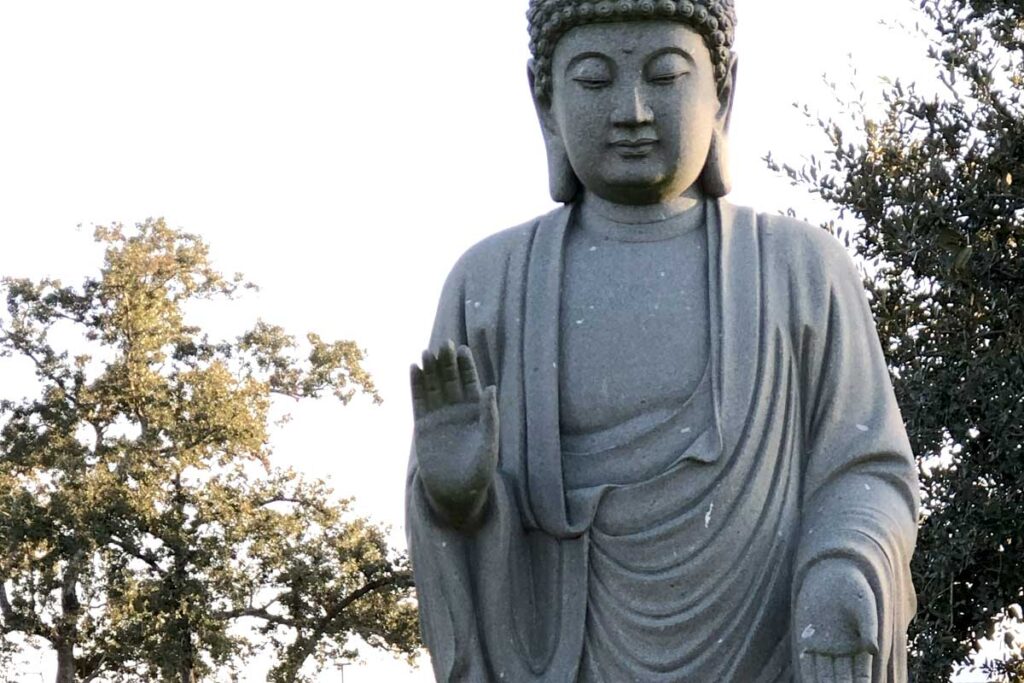How can we learn to Let Go in our Buddhist walk?
In Buddhism, the concept of letting go is central to achieving peace and liberation from suffering. Last month I lead a meditation on the topic of The Monk and the Woman and discussed how this story was related to “letting go” and discussed ideas on how we can practice this in our lives.
I’ll share the story as a video but first let’s explore some key Buddhist thoughts on letting go:
Impermanence (Anicca):
Buddhism teaches that everything in life is impermanent. Holding onto things, whether they are material possessions, emotions, or even thoughts, can lead to suffering because they are transient and will eventually change or pass away. Letting go of attachment to these impermanent things is essential for finding peace.
Attachment (Upadana):
The root cause of suffering, according to Buddhism, is attachment or craving. Attachment arises when we become overly identified with things or cling to them in an unhealthy way. Letting go of attachment means releasing our grip on desires and expectations, allowing things to be as they are without trying to control or possess them.
Non-attachment (Anupadana):
Letting go doesn’t mean giving up or abandoning things, but rather cultivating a mindset of non-attachment. Non-attachment involves appreciating and enjoying life fully while understanding that nothing is permanent or truly belongs to us. It’s about being present in the moment without clinging to the past or anxiously grasping for the future.
Freedom from the Self:
Buddhism teaches that there is no permanent, unchanging self (anatta). The sense of “I” or “me” is an illusion created by our attachments and ego. Letting go involves recognizing this illusion and realizing our interconnectedness with all beings and phenomena. When we let go of the self-centered view, we can experience a profound sense of freedom and liberation.
Mindfulness (Sati):
Practicing mindfulness is crucial for cultivating the awareness and clarity needed to let go. By observing our thoughts, emotions, and sensations without judgment or attachment, we can develop a deeper understanding of the nature of reality and our own minds. Mindfulness allows us to let go of unhelpful patterns of thinking and behavior, leading to greater inner peace and wisdom.
Overall, letting go in Buddhism is not about denying or suppressing our experiences, but rather embracing them with openness and acceptance. By releasing our attachments and cultivating a mindset of non-attachment, we can free ourselves from the cycle of suffering and find true happiness and contentment in the present moment.
Now let me share the story and lesson I shared in our meeting
Two Monks and a Woman - How to Let Go
The Buddhist story of Two Monks and a Woman
The story of the Two Monks and a Woman is a well-known Buddhist tale that teaches about the nature of attachment and letting go. Here’s the story:
Once, two monks were traveling together, a senior monk and a junior monk. They came to a river with a strong current where they found a young woman waiting, unable to cross alone concern about getting wet and a bit distraught.
The senior monk offered to carry her across the river on his shoulders. The young woman accepted his help, and the senior monk carried her safely across the river. The junior monk followed silently.
After they had crossed the river and the senior monk had put the woman down, she went on her way, and the monks continued their journey in silence. The junior monk was troubled by what had happened. Hours passed, and finally, unable to contain himself any longer, he spoke out: “Brother, our vows strictly forbid us to have any contact with women, and yet you carried that woman across the river! How could you do such a thing?”
The senior monk turned to him and replied, “I set her down hours ago at the river’s edge. Are you still carrying her?”
This story illustrates the dangers of attachment and the burden it can place on our minds. The senior monk’s actions were compassionate and spontaneous, but the junior monk’s mind became attached to what happened, causing him inner turmoil.
The senior monk’s response reminds us that holding onto past events or clinging to rigid interpretations of rules can weigh heavily on our minds, preventing us from being fully present in the moment.
I hope we covered some ideas today that will help you let go of ideas or things that may be weighing you down on your journey. Thank you for exploring these ideas with us.
I am on a continual journey to figure out how to let go of my own attachments.

